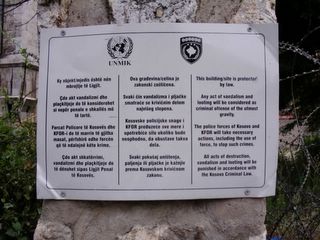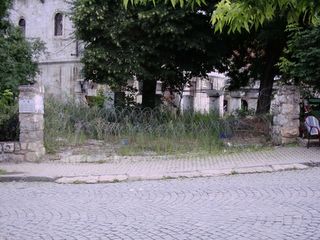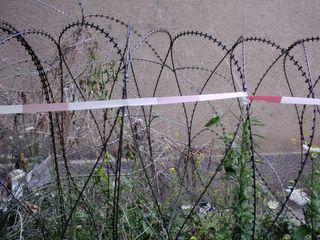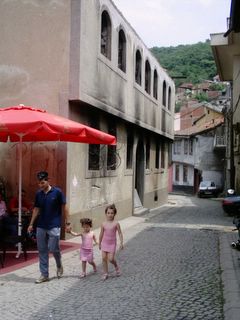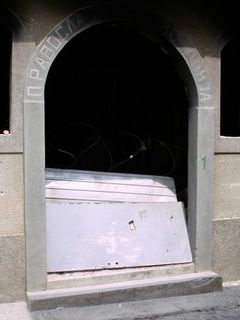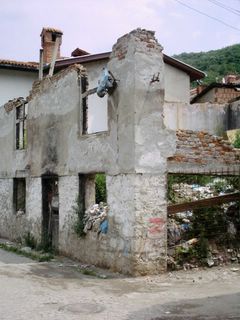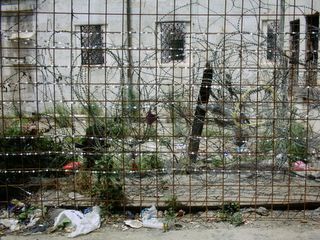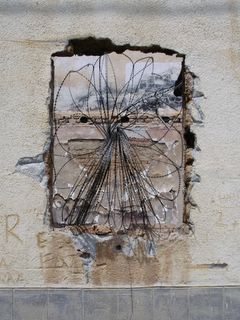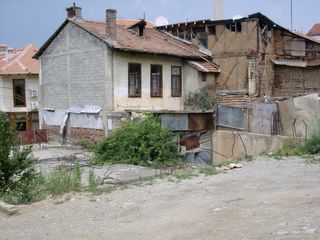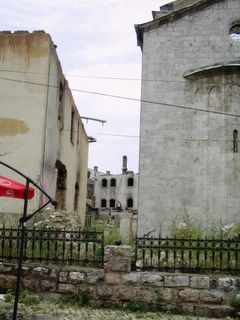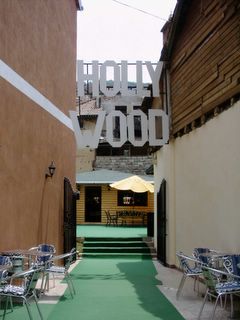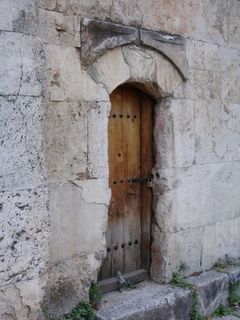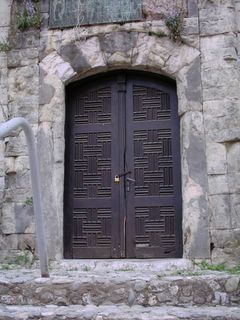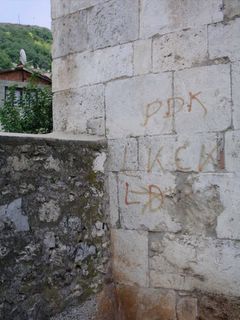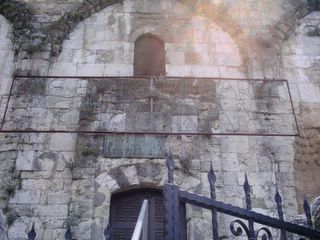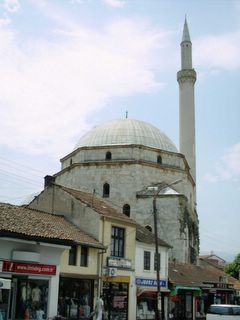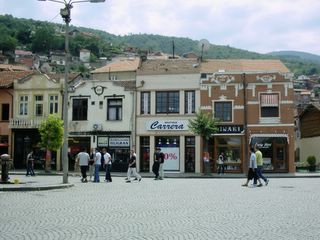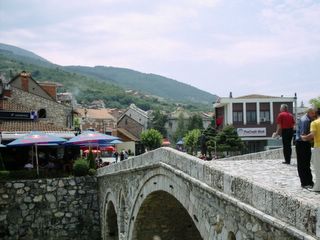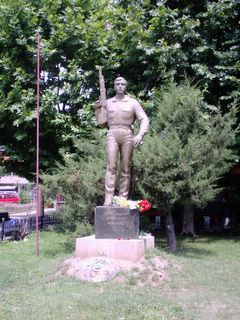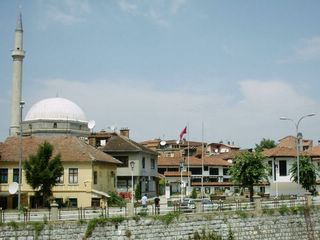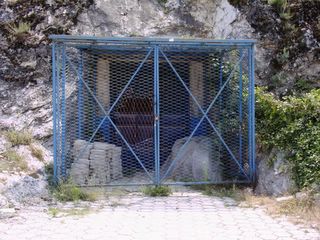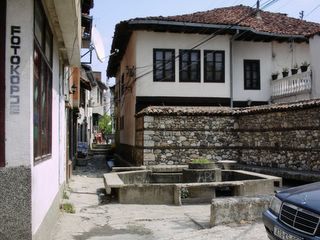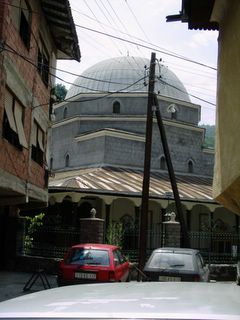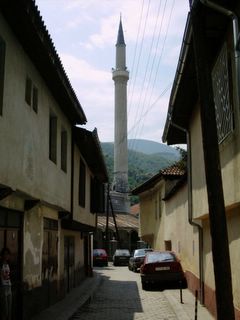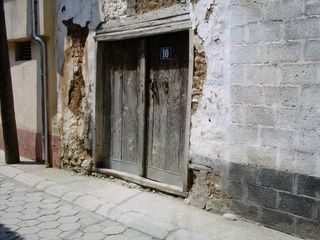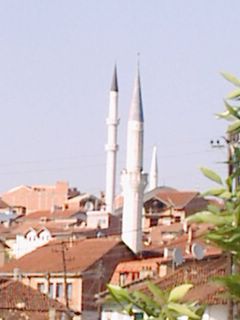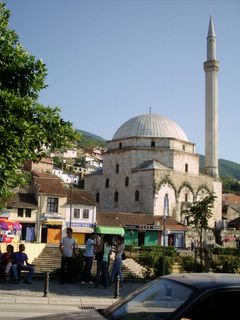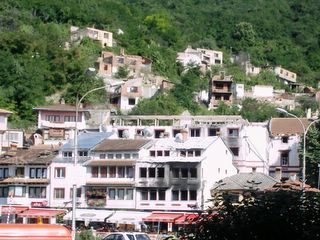
Prizren building 38: this is a monument to "Heroi i Kombit [War Hero] Xhevat I. Berisha, 1961-1998".
[Updated on the 14th of January 2007]
Apart from changing what I had written from '"... 1961-1995"(?)', which, as shown, I now think was '... 1961-1998', this update is to note that Vasilevs alleged that 'Berisha was a simple criminal and drug dealer whos been shoot by police of Yugoslavia'. As with so many of his other comments, I don't have the evidence to confirm or deny this.
I don't want to try to have a discussion when I don't have any information or confirmation, but if nothing else, discussing state police treatment of four men, including one named Xhevat Berisha, in 1998, Amnesty International (AI) did state that it was:
concerned about serious allegations that the men were tortured with electric shock batons during their interrogation and that at least one of them was beaten. Torture and ill-treatment by police of such suspects to obtain "confessions" is unfortunately routine in the province in the organization's experience.
If AI are referring to the same Xhevat Berisha, it wouldn't necessarily contradict Vasilevs' presentation, but, even if it weren't the same Xhevat Berisha, it would certainly bring into question the trustworthiness of the police, whose interpretations and actions Vasilevs' presentation depends upon.
At the same time, the Tribunal Watch List recorded that on the 8th of August 2001, 'German soldiers used barbed wire to stop the construction of the
monument to Xhevat Berisha, killed on September 1, 1998 in the village of Lez', before, on the 20th,
More than 3000 people protested against the decision to ban the erection of the statue to Xhevat Berisha and Ismet Jashari - Kumanova. At 12.15, the protestors scuffled with KFOR soldiers and the police. Police used tear-gas, truncheons and trained dogs against the protestors. A number of protestors were injured and had to ask for medical help at the hospital in Prizren. Liman Sejranaj suffered serious body injuries.
These seem to be (even) more likely to be referring to the Xhevat Berisha that this statue is of and that Vasilevs presents one opinion of and, if the German KFOR and Kosovan Police actions are anything to go by, Vasilevs' presentation may have some merit to it; still, all of this is still circumstantial. If it were the same Berisha, what happened between August 2001 and July 2005 that a statue was erected? Are the Berishas being presented here
different Berishas?
Given the presence of another statue, that one to 'Ismet
Jashari Komandant Kumanova', I think the Tribunal Watch List information is relevant, so the question is: what happened between August 2001 and July 2005 that led to these statues?
